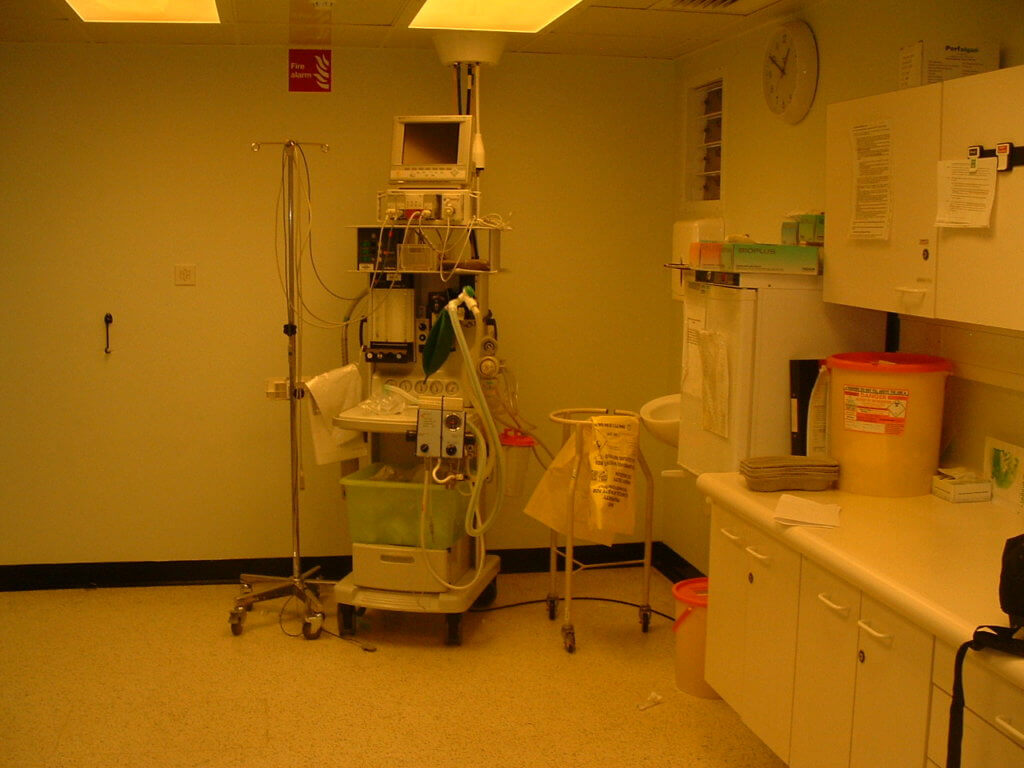Anaesthetist’s Perspective
Haemorrhage in gynaecology represents a considerable challenge. It is notoriously difficult to accurately assess external blood loss and impossible when the bleeding is concealed as in haemoperitonium caused by a leaking or ruptured ectopic pregnancy.
Patients can be clinically well despite an internal blood loss of over 1000mls.
Cardiovascular compensation occurs first with an increased stroke volume (not measured clinically) then a tachycardia, followed by decompensation with hypotension, oliguria, peripheral shutdown and loss of consciousness.
It is also important to remember that with acute blood loss the haemoglobin may not chnage initially.
Most women who die from ectopic pregnancy die from blood loss, either acute or chronic. Massive acute blood loss results in cardiac arrest. With continuing blood loss, hypotension leads to ischaemic and hypoxic damage to organs (hepatic and renal) and death occurs from multi-organ failure.
Haemorrhage occurs when there is excessive external or internal blood loss. It is difficult to measure the actual blood loss and this is often underestimated.
Clinical features
The features depend on the volume of blood lost and the rate at which haemorrhage occurred.
Shock occurs when there is hypoperfusion of vital organs. In haemorrhage the cause is hypovolemic shock. The symptoms and sequelae of haemorrhage are related to reduced perfusion of tissues. Different organ systems may be affected.
Dr Srinath Sudunagunta MBBS, DA, FRCA Consultant Anaesthetist

Classification of Hemorrhagic Shock
A classification of hemorrhagic shock is outlined in the table below.
The signs of shock are useful in determining the severity of blood loss. This may aid in determining the volume required for initial replacement
Loss of ~ 15% of blood volume may not be associated with any change in blood pressure (BP), pulse, or capillary refill (compensated shock). This is usually easily compensated, especially in the younger, healthy woman.
Mild shock: Further loss leads to tachycardia, a catecholamine response. Resting BP is usually normal, but orthostatic changes in BP and pulse may be evident. Simple resuscitation measures will successfully reverse these changes.
Moderate shock: Ongoing blood loss may overcome the compensatory mechansims, and marked tachycardia is associated with a fall in BP.
Severe shock: With continued bleeding, hypoperfusion of tissues occurs, leading to anaerobic metabolism and acidosis. There is marked tachycardia and tachypnea with respiratory failure. The patient becomes oliguric, and then anuric. Loss of consciousness may occur.
In irreversible shock cellular dysfunction, followed by cell death, leads to multiple organ, the mortality rate at this stage is in excess of 30%.
Classification of Hemorrhagic Shock
(taken from the SOGC Clinical Practice Guidelines No. 115, June 2002)
| Compensated | Mild | Moderate | Severe | |
| Blood Loss (mL) | ≤1000 | 1000-1500 | 1500-2000 | >2000 |
| Heart rate (bpm) | <100 | >100 | >120 | >140 |
| Blood pressure | Normal | Orthostatic change | Marked fall | Profound fall |
| Capillary refill | Normal | May be delayed | Usually delayed | Always delayed |
| Respiration | Normal | Mild increase | Moderate tachypnea | Marked tachypnea respiratory collapse |
| Urinary output (mL/h) | >30 | 20-30 | 5-20 | Anuria |
| Mental status | Normal or agitated | Agitated | Confused | Lethargic, obtunded |
Recommendations:
- Clinicians should be familiar with the clinical signs and stages of hemorrhagic shock.
- They should assess each woman’s risk for hemorrhagic shock and prepare for the procedure accordingly.
- Patients should be managed by a multidisciplinary team in a critical care setting
- Resuscitation includes adequate oxygenation and restoration of circulating volume by rapid infusion of a balanced crystalloid solution through two large bore IV Cannulas
- Blood component transfusion may be indicated. Blood should be warmed and infused through filtered lines
- Vasoactive agents are rarely indicated in the management of hemorrhagic shock
- Ongoing assessment of response to therapy is essential and includes clinical evaluation, and hematological, biochemical, and metabolic testing
- In hemorrhagic shock, prompt recognition and arrest of the source of hemorrhage, while implementing resuscitative measures, is needed